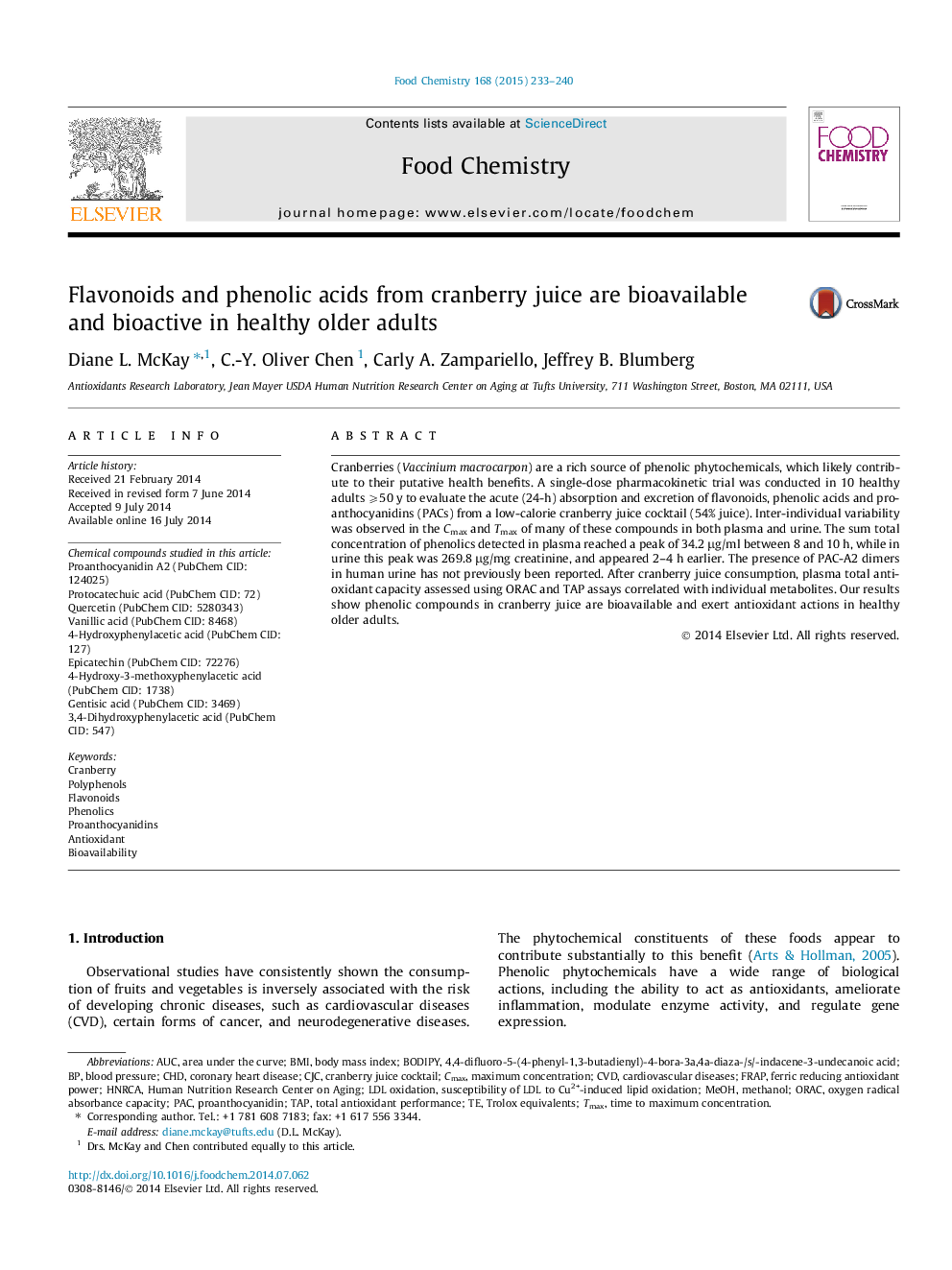| Article ID | Journal | Published Year | Pages | File Type |
|---|---|---|---|---|
| 7595118 | Food Chemistry | 2015 | 8 Pages |
Abstract
Cranberries (Vaccinium macrocarpon) are a rich source of phenolic phytochemicals, which likely contribute to their putative health benefits. A single-dose pharmacokinetic trial was conducted in 10 healthy adults ⩾50 y to evaluate the acute (24-h) absorption and excretion of flavonoids, phenolic acids and proanthocyanidins (PACs) from a low-calorie cranberry juice cocktail (54% juice). Inter-individual variability was observed in the Cmax and Tmax of many of these compounds in both plasma and urine. The sum total concentration of phenolics detected in plasma reached a peak of 34.2 μg/ml between 8 and 10 h, while in urine this peak was 269.8 μg/mg creatinine, and appeared 2-4 h earlier. The presence of PAC-A2 dimers in human urine has not previously been reported. After cranberry juice consumption, plasma total antioxidant capacity assessed using ORAC and TAP assays correlated with individual metabolites. Our results show phenolic compounds in cranberry juice are bioavailable and exert antioxidant actions in healthy older adults.
Keywords
CHDtmaxCmax3,4-Dihydroxyphenylacetic acid (PubChem CID: 547)Epicatechin (PubChem CID: 72276)Proanthocyanidin A2 (PubChem CID: 124025)Quercetin (PubChem CID: 5280343)FRAPPACORACAUCAntioxidantProtocatechuic acid (PubChem CID: 72)Vanillic acid (PubChem CID: 8468)LDL oxidationcoronary heart diseaseCardiovascular diseasesTrolox EquivalentsBODIPYmaximum concentrationCVDtime to maximum concentrationbody mass indexBMITAPoxygen radical absorbance capacityBioavailabilityBlood pressureFlavonoidsPhenolicsMethanolarea under the curveMeOHProanthocyanidinsProanthocyanidinPolyphenolsferric reducing antioxidant powerCranberry
Related Topics
Physical Sciences and Engineering
Chemistry
Analytical Chemistry
Authors
Diane L. McKay, C.-Y. Oliver Chen, Carly A. Zampariello, Jeffrey B. Blumberg,
